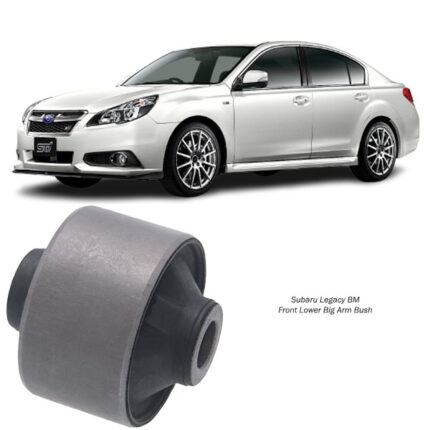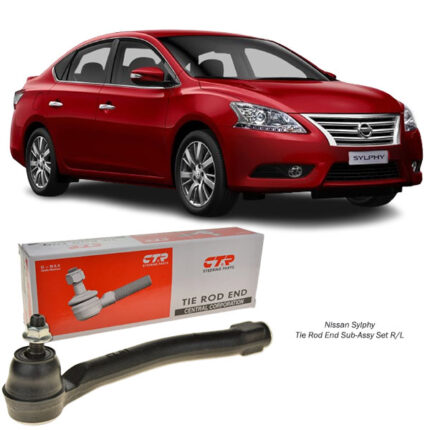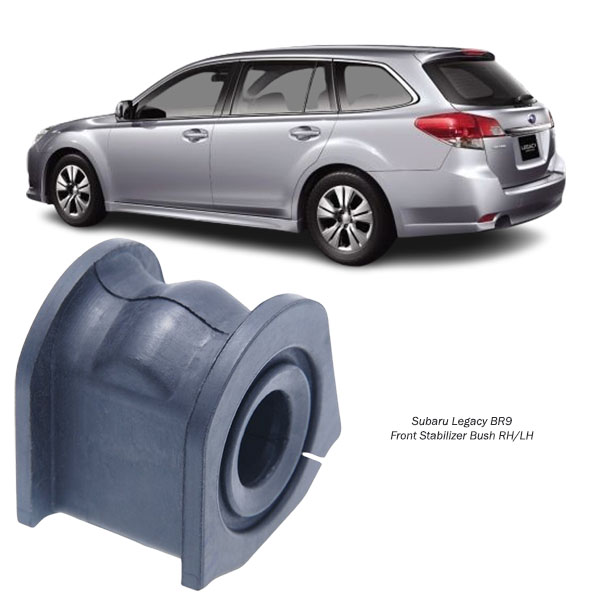-20%
Get Subaru Legacy BR9 Front Stabilizer Bush RH/LH 20414-AJ120 in Kenya
The Front Stabilizer Bushes (Right-Hand (RH) & Left-Hand (LH)) play a crucial role in a vehicle’s suspension system. These small but vital components help maintain stability, reduce body roll, and enhance overall handling, especially during turns. In this guide, we’ll cover their function, importance, common issues, replacement process, and maintenance tips.
What is a Front Stabilizer Bush? 🛠️
The Front Stabilizer Bush is a rubber or polyurethane component that secures the stabilizer bar (sway bar) to the chassis. It helps in dampening vibrations, reducing suspension noise, and ensuring smooth weight distribution while cornering.
Key Features:
✔️ Holds the stabilizer bar in place
✔️ Reduces excessive body roll during turns
✔️ Enhances ride comfort & stability
✔️ Made of rubber or polyurethane for flexibility and durability
Each vehicle has two stabilizer bushes – one for the right-hand (RH) side and one for the left-hand (LH) side. These components are essential for balanced weight distribution and preventing excessive movement of the sway bar.
Why Are Stabilizer Bushes Important? 🚘
A properly functioning Front Stabilizer Bush offers multiple benefits:
🔹 Improved Handling – Keeps the vehicle stable while cornering.
🔹 Reduced Noise & Vibrations – Absorbs road shocks and prevents metal-to-metal contact.
🔹 Prevents Uneven Tire Wear – Helps maintain proper wheel alignment.
🔹 Enhances Suspension Longevity – Reduces strain on other suspension components like control arms and shocks.
Without functional stabilizer bushes, you may experience poor vehicle handling, excessive body roll, and premature wear on tires and suspension components.
Signs of a Worn-Out Front Stabilizer Bush 🚨
Like all rubber-based suspension components, the stabilizer bushings wear out over time due to heat, road conditions, and mechanical stress. Here are the most common signs of failure:
🔧 Clunking or Knocking Sounds – Noticeable when driving over bumps or uneven roads.
🚗 Excessive Body Roll – More swaying when taking turns or changing lanes.
🛞 Poor Steering Response – Feels loose or less precise.
💨 Vibrations from the Front Suspension – Can be felt in the steering wheel or cabin.
⚠️ Visible Cracks or Deformation – Rubber may look dry, cracked, or compressed.
If you notice these symptoms, it’s time to inspect and replace the stabilizer bushes.
Front Stabilizer Bush Replacement Process 🔩🛠️
Replacing the Front Stabilizer Bush RH/LH is a moderate-difficulty task that requires basic mechanical tools.
Tools Required 🧰
✔️ Jack & jack stands
✔️ Wrenches & sockets
✔️ Pry bar (for removing old bushings)
✔️ Grease or lubricant (for installation)
Step-by-Step Guide
1️⃣ Lift the Vehicle – Use a jack and secure jack stands before working under the car.
2️⃣ Locate the Stabilizer Bar & Bushes – The bushes are wrapped around the sway bar, attached to the chassis via brackets.
3️⃣ Remove the Brackets – Unscrew the bolts holding the RH & LH stabilizer bush brackets in place.
4️⃣ Take Out the Old Bushes – They may need to be pried off if they are worn or stuck.
5️⃣ Clean the Area – Remove dirt, rust, or debris before installing the new bushings.
6️⃣ Install the New Bushes – Slide them onto the stabilizer bar, ensuring they fit snugly.
7️⃣ Reattach the Brackets – Secure them properly to hold the bushes in place.
8️⃣ Test Drive – Check for improved stability and listen for any unusual noises.
💡 Tip: If your new bushings are polyurethane, apply a small amount of grease to prevent squeaking.
OEM vs Aftermarket Stabilizer Bushes 🏁
When replacing your Front Stabilizer Bushes, you’ll find OEM (Original Equipment Manufacturer) and Aftermarket options.
🔹 OEM Bushes:
✔️ Designed by the vehicle manufacturer
✔️ Perfect fit and factory-quality durability
✔️ More expensive but ensures compatibility
🔹 Aftermarket Bushes:
✔️ Available in different materials (rubber, polyurethane)
✔️ May offer better performance & durability for off-road or performance driving
✔️ More affordable but varies in quality
For Toyota Prado 120 & 150 series, OEM rubber bushings are ideal for daily driving, while polyurethane aftermarket bushings work better for off-road or high-performance applications.
Maintenance & Longevity Tips 🏎️
To extend the lifespan of your Front Stabilizer Bushes, follow these simple maintenance steps:
✅ Inspect Regularly – Check for cracks, wear, or loose brackets every 6-12 months.
✅ Keep Suspension Clean – Dirt and debris can accelerate rubber degradation.
✅ Lubricate Polyurethane Bushings – Reduces squeaking and prolongs lifespan.
✅ Replace in Pairs – Always replace both RH & LH bushes for balanced suspension performance.
By following these steps, you can prevent premature wear and maintain optimal handling & ride comfort.
Common Questions About Stabilizer Bushes 🤔
1️⃣ How often should I replace my stabilizer bushes?
Typically, every 50,000 – 100,000 km, but it depends on driving conditions and road quality.
2️⃣ Can I drive with worn-out stabilizer bushes?
Yes, but it’s not recommended. Worn bushes reduce handling and stability, which can be dangerous in emergency maneuvers.
3️⃣ What’s better: Rubber or Polyurethane stabilizer bushes?
🔹 Rubber – Softer, absorbs vibrations well, best for daily driving.
🔹 Polyurethane – Stiffer, longer-lasting, ideal for off-road & performance driving.
4️⃣ Do stabilizer bushes affect tire wear?
Yes! Worn-out bushes cause poor alignment & suspension movement, leading to uneven tire wear.
Final Thoughts 💭
The Front Stabilizer Bush RH/LH is a small yet essential component in your vehicle’s suspension system. Whether you drive a Toyota Prado 120/150 or another model, maintaining your stabilizer bushes is crucial for safe, comfortable, and stable driving.
🔧 If you notice any signs of wear, replacing your stabilizer bushes with OEM or high-quality aftermarket options can restore optimal suspension performance.
Follow us on Facebook for more parts.




Reviews
Clear filtersThere are no reviews yet.